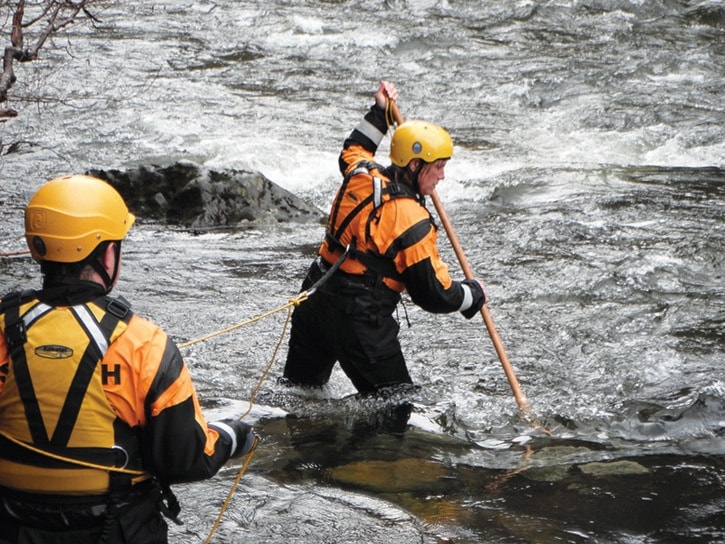When a hiker gets lost in East Sooke, or a climber breaks their leg descending Mt. Macdonald, there’s a good chance Victoria Weber will be leading the search and rescue operation.
As one of Juan de Fuca Search and Rescue’s senior managers, Weber has just about seen it all in her 35 years of volunteer service, from multi-hour stretcher hauls through the back country to a frantic search for a lost child.
Most search and rescue personnel volunteer because of a desire to help people, and that’s true of Weber as well, but some also enjoy the inevitable excitement and adrenaline that comes with a hair-raising rescue operation. Weber, however, looks at each rescue a little bit differently.
“For me it’s more the challenge. It’s like this really big, complicated puzzle and I like doing the investigation, finding the pieces of the puzzle and then putting the pieces together. That’s the excitement for me … and at the end of that, we might save a life.”
 One of the biggest puzzles Weber has ever had to assemble happened in the 1980s when a seven year-old boy ran away from a scouting camp.
One of the biggest puzzles Weber has ever had to assemble happened in the 1980s when a seven year-old boy ran away from a scouting camp.
The boy was alone and lost in the wilderness, and the situation grew in urgency with each tick of the clock.
“He was a city boy, he had just moved from Toronto and didn’t have any outdoor experience,” Weber recalled. “He was missing for days and days and we were starting to get discouraged and starting to wonder where this was going to go.”
Weber was the leader on the team that found the boy, who was covered in mud and had survived on his own by eating bugs and worms.
“It was like he had grown up in the bush. He just stayed alive,” she said.
Weber describes the experience of the helicopter rescue and reuniting the boy with his family as intensely emotional.
“I helped him out of the helicopter into his mom’s waiting arms. That (memory) will stay with me forever,” she said.
Weber, whose so-called “real life” job is in nursing, says while public education around safety in the back country has improved compared to when she started with SAR, online access to trail and hiking information is making it easier for less experienced explorers to find themselves in troublesome situations.
“We’re getting a whole bunch of people who are not hikers … yet they do a Google search and take their cell phone and think they are invincible and away they go,” she said.
More experienced individuals are doing more extreme activities as well, according to Weber. Whereas three- or four-hour hikes might have been the norm when she started, three- to four-day hikes are becoming increasingly popular.
 JDF SAR boasts 45 of what Weber calls “very active members” and another 20 or so people on reserve. Their coverage area includes a large swath of land on the southern part of Vancouver Island, stretching from the Metchosin municipal border right through to Pacific Rim National Park, including the south end of the park itself.
JDF SAR boasts 45 of what Weber calls “very active members” and another 20 or so people on reserve. Their coverage area includes a large swath of land on the southern part of Vancouver Island, stretching from the Metchosin municipal border right through to Pacific Rim National Park, including the south end of the park itself.
Recently, the organization has taken over the former East Sooke fire hall as its home base. They’ve also completed some renovations to the building and welcomed the addition of a new command vehicle.
With those exciting developments in mind, the organization is hoping the community will join them for an open house this Saturday (Oct. 22) from 10 a.m. to 2 p.m. at their new headquarters (1397 Coppermine Rd.) A barbecue, door prizes and children’s activities will be among the highlights of the event, with the goal of raising funds for the organization’s day-to-day operations, training and equipment.
“(Donations) go directly into the services that we offer that help save lives,” Weber said.
joel.tansey@goldstreamgazette.com
